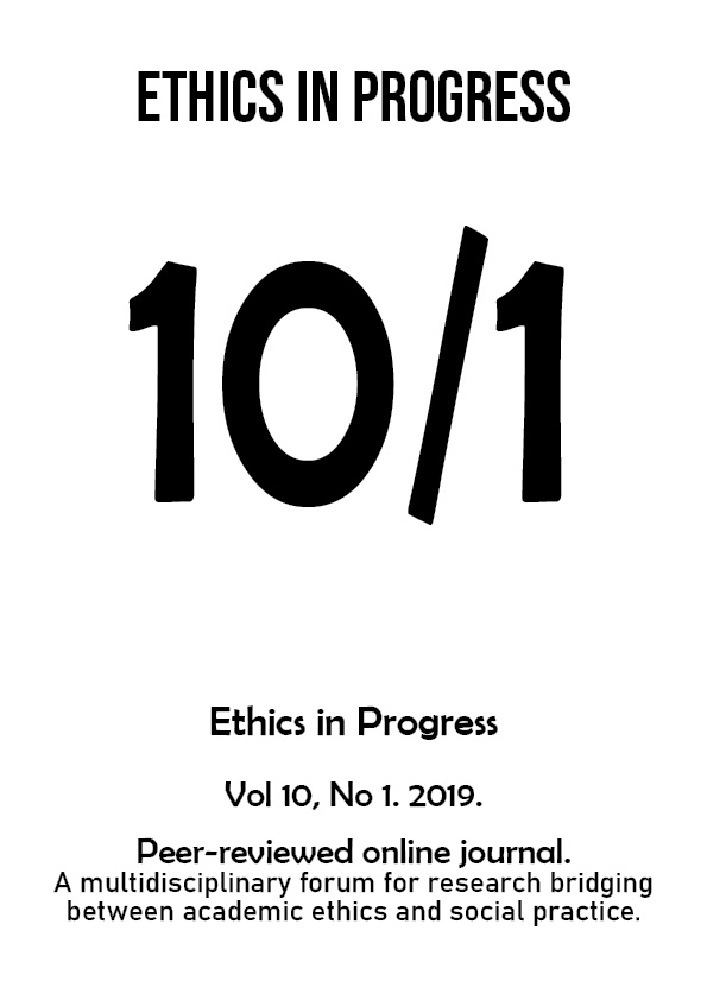Abstract
In this paper I propose to demonstrate how the anthropological view can highlight the effects of the relationship between ethnic nationalism and global processes. Showing the results of an ethnographical research conducted in 2015, I focus on the representation of social identity in the contemporary Basque Country. I emphasize the central role played by the new technologies for the identification of the Basque communities’ boundaries. The creation of „the eighth province“ (or province of the diaspora) shows how, in this context, Internet could transform the “imagined community” into a virtual reality. The ethnographical view proves to be useful to understand how local practices and discourses can interact with global phenomena: particularly significant is the spreading of archaeogenetic investigations in Euskal Herria, in order to verify the hypothesis of a reproductive isolation of Basque people. Moreover, a big part of local population is using genetic tests proposed online by DNA consulting agencies. It is important to identify how these genetic narratives are absorbed and reused by local populations and if they can reshape the past of a mnemonic community, influencing the representation of its future.
References
Alonso S., Flores C., Cabrera V., Alonso A., Martin P., Albarran C., Izagirre N., de la Rua C., & Garcia O. 2005. „The Place of the Basques in the European Y-Chromosome Diversity Landscape.” European Journal of Human Genetics 13:1293-302.
Altuna J., De la Rua C. 1989. “Dataciones absolutas de los craneos del yacimiento prehistorico de Urtiaga, San Sebastian.” Munibe 41:23-28.
Anderson B. 1996. Comunità immaginate. Origini e diffusioni dei nazionalismi, Roma: Manifestolibri.
Appadurai A. 2012. Modernità in polvere, Milano: Cortina.
Bertranpetit J., Sal J., Calafell F., Underhill P. A., Moral P. & Comas D. 1995. „Human Mitochondrial DNA Variation and the Origin of Basques.” Annals of Human Genetics 59:63-81.
Caramelli D. 2009. Antropologia molecolare. Manuale di base, Firenze: Firenze University Press.
Cardoso S., Valverde L., Palencia L., Martínez de Pancorbo M., López Quintana J. C., & Guenaga L. 2011. „Análisis del ADN mitocondrial en los restos humanos de la cueva de Santimamiñe (Kortezubi, Bizkaia).” Kobie 1:383-92.
Cavalli-Sforza L. L. 1987. „The Basque Population and Ancient Migration in Europe.” Munibe 6:129-37.
Cavalli-Sforza L. L. 1996. Geni, popoli e lingue. Milano: Adelphi.
Cavalli-Sforza L. L. 2008. L’evoluzione della cultura. Torino: Codice.
Cavalli-Sforza L. L. & Feldman M. W. 1981. Cultural Transmission and Evolution: a Quantitative Approach. Princeton: Princeton University Press.
Cavalli-Sforza L. L., Menozzi P., & Piazza A. 2000. Storia e geografia dei geni umani. Milano: Adelphi.
Douglass W. 2007. „In Search of the Basque American Diaspora”, in G. Totoricagüena (a cura di), Opportunity Structures in Diaspora Relations. Comparisons in Contemporary Multilevel Politics of Diaspora and Transnational Identity. Reno: Center for Basques Studies (113-35).
Fabietti U. 2013. L’identità etnica. Storia e critica di un concetto equivoco. Roma: Carocci.
Hurles M., Veitia R., Arroyo E., Armenteros M., Bertranpetit J., Perez-Lezaun A., Bosch E., Shlumukova M., Cambon-Thomsen A., McElreavey K., Lopez De Munain A., Rohl A., Wilson I., Singh L., Pandya A., Santos F., Tyler-Smith C., & Jobling M. 1999. „Recent Male-Mediated Gene Xow over a Linguistic Barrier in Iberia, Suggested by Analysis of a Y-Chromosomal DNA Polymorphism.” Human Genetics 65:1437-48.
Kent M. 2013. “The Importance of Being Uros: Indigenous Identity Politics in the Genomic Age.” Social Studies of Science 43(4):1-23.
Kent M. & Ventura Santos R. 2012. “Os charruas vivem” nos Gaúchos: a vida social de uma pesquisa de ‚resgate’ genético de uma etnia indígena extinta no Sul do Brasil”. Horizontes Antropológicos 18(37):341-72.
Kent M. & Ventura Santos R., & Wade P. 2014. “Negotiating Imagined Genetic Communities: Unity and Diversity in Brazilian Science and Society.” American Anthropologist 116(4 ):736-48.
Piazza A. 2001. “I geni e le lingue umane. Due alberi genealogici a confronto”, in G. Bocchi & M. Ceruti (a cura di), Le radici prime dell’Europa. Gli intrecci genetici, linguistici, storici. Milano: Mondadori (72-86).
Piazza A., Cappello N., & Cavalli-Sforza L. L. 1988. „The Basques in Europe: A Genetic Analysis.” Munibe 6:169-77.
Rodríguez-Ezpeleta N., Álvarez-Busto J., Imaz L., Regueiro M., Nerea Azcárate M., Bilbao R., Iriondo M., Gil A., Estonba A., Aransay A. M. 2010. „High-Density Snp Genotyping Detects Homogeneity of Spanish and French Basques, and Confirms Their Genomic
Distinctiveness from Other European Populations.” Human Genetics 128 (1):113- 17.
Rodríguez-Martínez A., Zarranz J. J., Digón A., Galdós L., Ibáñez A., & de Pancorbo M. M. 2007. „Estudio Genealógico del Insomnio Familiar Letal en el País Vasco.” Antropo 15:41-7.
Simpson R. 2000. “Immagined Genetic Communities. Ethnicity and Essentialism in the Twenty-First Century.“ Anthropology Today 16(3):3-6.
Solinas P. G. 2003. “Arbores Americae”, in P. Scarduelli (a cura di), Antropologia dell’occidente. Roma: Meltemi (69-101).
Solinas P. G. 2013. “Genealogia Parentela Genetica. Mantenere le distanze?” ANUAC 2:1-25.
Solinas P. G. 2015. Ancestry, parentele elettroniche e lignaggi genetici. Firenze: Editpress.
Tamarkin N. 2014. „Genetic Diaspora: Producing Knowledge of Genes and Jews in Rural South Africa.“ Cultural Anthropology 29(3):552-74.
Tejerina B. 1999. „El Poder de los símbolos. Identidad colectiva y movimiento etnolingüistico en el País Vasco.” Reis 88:75-105.
Totoricagüena G. 2002. „Euskal Herria visto desde la diáspora: análisis de las relaciones institucionales entre Euskal Herria y la diáspora vasca.” In XV Congreso de Estudios Vascos: Euskal zientzia eta kultura, eta sare telematikoak. Donostia: Eusko Ikaskuntza (355-367).
Totoricagüena G. 2005. Basque Diaspora: Migration and Transnational Identity. Reno: Center for Basque Studies.
Trupiano V. 2013. Gli usi della diversità genetica. DNA, parentele e politiche dell’appartenenza. Bologna: Il Mulino.
Vittadini N. 2006. “Reti di computer, reti di culture: la presenza online dei migranti”, in: L. Bovone & P. Volonté (a cura di), Comunicare le identità. Percorsi della soggettività nell’età contemporanea. Milano: Franco Angeli (75-90).
Volpi L. 2018 “Nondik Gatoz? Riconfigurare il passato attraverso le indagini genetiche per riscrivere il presente in Euskal Herria.” L’uomo. Società, Tradizione, Sviluppo 1:53- 76.
Zulaika J. 2000. Del Cromañon al carnaval. Los vascos como museo antropológico. Donostia: Erein.
Zerubavel E. 2005. Mappe del tempo. Memoria collettiva e costruzione sociale del passato. Bologna: Il Mulino.





